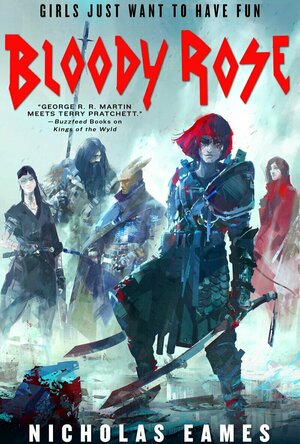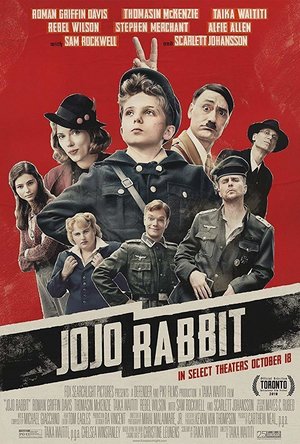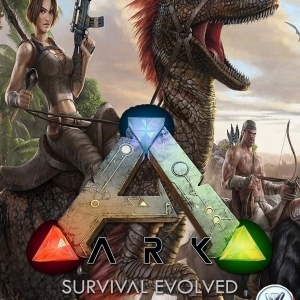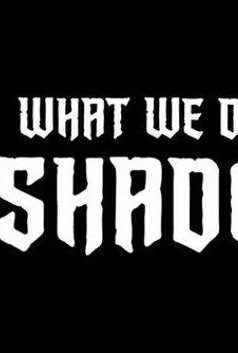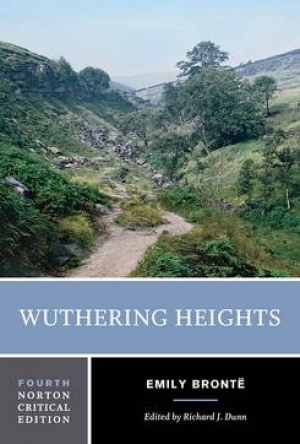Natacha (374 KP) rated Bloody Rose in Books
Dec 1, 2019
You can find the review and many more on my blog: natachainreviewland.wordpress.com
I loved the first book and I was so excited to read the second one. And I have to admit it was a roller coaster. The first 1/4 of the book I was really disappointed and almost angry at it. I felt that it didn't much the first book and I thought it will end up being a 3 stars (5-6 for smashboom) read. Then the next 2/4 of the book started picking up and then... oh boy was the last part of the book exactly what I was expecting from it and more... I've mentioned it before but the ending of a book and make or break the whole book for me and darn did this ending made the book a 4.5 stars (9/10 for smashbomb).
Things I liked:
-As with the first book, the characters were all well written, with their own personality and back story to tell. They all complimented each other and the outcome was amazing.
-Rose. I didn't care for her for most of the book but the author absolutely changed my mind by the end. Love when that happens.
-The writing, again as with the first book, was simple and easy to follow.
-The story and the journey were almost perfectly crafted. Always something new happening to keep you invested in the story with twists and turn that sometimes are obvious but sometimes you don't see them coming.
-I said in my review of the first book the I loved the final battle... Boy oh boy did this battle topped it by far! Loved it!
-It was very nice to see many characters from book one.
-I really love when books or movies dare not to give every single character a happy end. And this book did that! Not every character had a happy ending and not everyone survived. I'll be honest, there were a couple of foreshadowing but it was so well done! Oh, my poor little heart.....
Things I didn't like:
-As I mentioned in the above I had issues with the start of the book. We spend a 1/4 of the book with our characters going from arena to arenas and fighting monsters without feeling that this is connected in any way to the actual main story. I was a nice way to get a very good idea of every one of our band member but I still felt that it was falling short especially compared to the preview book. I didn't felt the connection between the members as strongly as I felt it with the previous band
-As with the first book with have every single fantasy creature that you can image. So much so that we lost track of what is what and how they look. Same with the number of characters during the battle. It is nice to see all the different characters having a role in the battle and not seeing only our main band but you quickly lose track of who is who so I ended up not really caring about how got killed or not.
-I spend most of the book mad at the author for foreshadowing, no, almost telling me that our MC will fall in love with a character. And I wasn't wrong but because I was told about it from the first 2 pages it felt forced... At the end of the book the author managed to change my mind I admin, but I still spend most of the book mad about the fact that he foreshadowed it instead of slowly showing me things developing.
Lee (2222 KP) rated Jojo Rabbit (2019) in Movies
Dec 17, 2019
We begin by meeting 10 year old German boy, Johannes 'Jojo' Betzler (Roman Griffin Davis), as he nervously prepares to head off to Nazi youth camp in order to fulfill his dream of serving Adolf Hitler. Heading up the camp is one-eyed Captain Klenzendorf (Sam Rockwell), aided by a bunch of inept instructors, including Fraulein Rahm (Rebel Wilson) and Finkel (Alfie Allen). At the camp, boys get to play with knives and hand grenades, girls are taught the importance of having babies (Fraulein Rahm has given birth to 18!), while all of the children are taught about the evil monsters that are the Jews. Accompanying Jojo at the camp are best friend Yorki (a brilliant Archie Yates, soon to be starring in the recently announced remake of Home Alone) and Jojo's imaginary friend Hitler (Taika Waititi). When Jojo refuses to wring the neck of rabbit during a lesson on killing (earning him the nickname Jojo Rabbit), and is hospitalised following an unfortunate incident with a grenade, he is forced to leave the camp behind, returning home to be with his mother Rosie (Scarlett Johansson).
While his mother is out during the day, Jojo discovers a teenage Jewish girl named Elsa (Thomasin McKenzie) hiding out in the wall-space of his sisters bedroom. Jojo is initially shocked, and repulsed, by this hideous Jew, even more so when he discovers that it was his mother who was responsible for hiding her. As time goes on though, Jojo and Elsa begin to form a friendship, with Elsa feeding Jojo a series of made up ridiculous stories and tales regarding the origins and ways of Jews so that Jojo can write a book about them. All the while, Rosie remains completely unaware that Jojo knows anything of Elsa. The bumbling, goofy Hitler occasionally shows up too when Jojo needs words of encouragement, or when times are tough, and provides us with some welcome light relief. More humour is provided in the form of various smaller characters, including gestapo member Stephen Merchant and his team during what is essentially a pretty serious and dramatic scene as they show up and ransack Jojo's house.
But Jojo Rabbit is a movie about relationships. The Jojo/Hitler dynamic begins to take a backseat as things start to get more serious and we focus more on the bond between Jojo and his mother, and the relationship between Jojo and Elsa, as the final months of the war play out. The child actors in Jojo Rabbit are all outstanding and we also get to see a wonderfully different side to Scarlett Johansson. Sam Rockwell is hilarious and Rebel Wilson is just, well, Rebel Wilson! Occasionally though, we are dealt an unexpected gut punch, and it's fair to say that you'll be crying at Jojo Rabbit just as much as you'll be laughing. If I'm honest, I really wasn't expecting that side to Jojo Rabbit and it did more for me and my enjoyment of the movie than the comedy did, which wasn't really as laugh out loud as I thought it would be. Overall though, Jojo Rabbit is simply wonderful - funny, heartbreaking, sad and poignant - and unlike anything you've ever seen before.
Dan Lacey (7 KP) rated the Xbox One version of ARK Survival Evolved in Video Games
Feb 26, 2020
This is a game I fell in love with and at the very same time detested the game in its entirety. It is a very strange feeling to enjoy a game so so much that you hate it's very existence.
Allow me to explain, Ark is a survival game in case the name didnt give that away in which you start stranded on an island with nothing but your underwear and a dream. The early game very quickly becomes a nightmare comprising of being mauled to death by Raptors or being beaten to a pulp by another player. The aim of the game is to build your base, fortify your base and tame the vast amount of creatures ark has to offer to enable you to progress further in the game by defeating boss monsters and learning the story of the arks.
Taming creatures of the game is so much fun each one has it's own stats abilities and a way to tame it. Most can even be bred to improve its stats via mutations which also can change the colours of the creature. There is a vast interconnected system with all creatures each one is good at something and may lack at something else. There is no better feeling than the very first time you successfully tame a tyranosaurus rex and plop a saddle on it's back, then hop on and March off into battle. The feeling you get when after a few days you place your first set of turrets around your little shack in the hope that when you log on again the next day you will still have everything untouched is a feeling of dread and satisfaction.
There are two game modes pvp (player vs player) and pve (player vs environment) this review will mainly focus on the pvp side as that is the mode I am most familiar with. One of the biggest draws to this game is the amount of content there is available due to the many dlcs. The flipside is that due to the constant need by the developers to sell more digital content they have neglected the many many many many MANY problems the game has which allows players to cheat their way to the top.
The game is riddled with toxic players who will exploit anything on a massive scale if it puts them to the alpha status all players strive to achieve. The game has been plagued by players under meshing (going under the game map) and being able to destroy other players work without worry of being killed by the many forms of defences there are. Players also have various ways in which to duplicate full inventories of items and tames. The developers however turn a blind eye to this at the same time saying they are going to fix it.
Yet here we are in 2020 and I'm some 3.5k hours into the game still complaining still hating the game and at the same time in total love with it. The game is like a drug that you want to give up but at the exact same time you tell yourself you can quit when you want believing the potential this game had and still has will one day shine through and it will all be worth it.
So to sum it up, Ark is like taking a shower in lemon juice while covered in papercuts. It's painful but at the end of the day you smell lemony fresh so the pain is mostly worth it for the pleasures you get in the end.
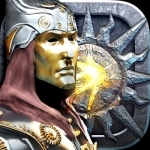
The Shadow Sun
Games and Entertainment
App
The ultimate Western action RPG has arrived on iOS! Embark on an epic dark fantasy in the grand...
Kirk Bage (1775 KP) rated What We Do in the Shadows in TV
Jan 22, 2021
The lead duo are joined in all 20 episodes over 2 seasons so far by relative unknowns Natasia Demetriou, Harvey Guillén and Mark Proksch. The first two do adequate jobs of keeping the laughs rolling and the mood steady. But it is Proksch, who brings some knowledge of a working mockumentary farce from his role as Nate is the US version of The Office, who is the stand-out as Colin the energy vampire, who bores his victims to death, or leaves them drained of the will to live. The many ways that single joke is varied to hilarious effect is a thing of true comedic beauty at all times.
The fine balance between the bizarre and ridiculous world of vampires and other monsters with a situation of utter mundanity like flatsharing affords some wonderful moments of laugh out loud insanity. The writing is terrific all the way through, and the bite sized episode lengths ensure it zips along and the joke only wears thin if you gorge on too many in one go. In fact I would strongly recommend not bingeing this one, but rather savouring 2 or 3 in a sitting then leaving it a while. There is something about missing it and coming back to the joke after a break that works better for me.
Some of the things I love about it are the details of the visual world they live in. The paraphernalia of the flat they live in and the clothes they wear is joyous and ever rewarding. There will be things to spot in the background that you missed first time for sure – and that is a sign to me that they wanted to create a classic here and not something disposable. I also adore the opening credit sequence, and sing along every single time.
Then there is the fabulous use of creative swearing, that manages to reach new and surprising heights episode to episode. Berry is especially proficient in this art, leaving me spitting out my tea many times with the use of a profane phrase off the cuff. It is as much the way he says it as what he says, so it is no surprise to me he has been singled out at recent TV awards shows. I hope he gets the recognition he deserves with a shiny trophy or two.
The fact that it was nominated for 8 Emmys for season 2, after only two nods for season 1, also shows that this is an entity that gets better if you stick with it. At first the pattern of the humour may not gel, but the more you get used to it, the character quirks and various relationships, the rewards as a viewer are exponentially good. And if you watch long enough there are also some tasty cameo parts that turn up… but I won’t spoil the surprises here.
Is it a joke that can run and run? No probably not. But I would like to at least see a third season, to wrap it all up. Especially as season 2 ends on somewhat of a cliffhanger, as much as a puerile comedy like this can do. I am a fan. And I imagine I’ll always be able to go back and enjoy an episode here and there to cheer me up. Brilliant stuff, that has its heart and its funny bones in all the right places. Go on, stick your teeth into it!
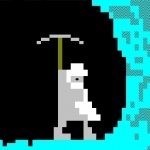
Dwarf Fotress
Video Game Watch
Dwarf Fortress is a single-player fantasy game. You can control a dwarven outpost or an adventurer...
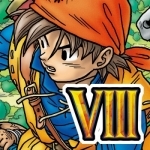
DRAGON QUEST VIII
Games
App
[Recommended Hardware] iPhone 5 or Higher/iPad (3rd Generation or Better) Please Note: iPhone 4 is...

Paint Sparkles Draw
Education and Games
App
~~~ Top selling education app! Over 11,000,000 downloads around the world! ~~~ ~~~ No.1 Kids...
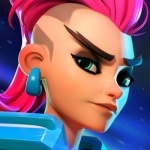
Planet of Heroes - Brawl MOBA
Games
App
Looking for an exciting real time war game for smartphones? Welcome to Planet of Heroes: stunning...
A Bibliophagist (113 KP) rated Wuthering Heights in Books
Feb 12, 2020
In reading reviews prior to reading this book, I learned three major things; 1, people either love or hate this book, 2. I had no idea what I was actually in for, and 3. this may have not been the romantic pick for February I was expecting it to be.
So yes, PSA for anyone out there considering going into this thinking it's a romance. It is NOT. There are love stories in this, absolutely, powerful love stories that made me read quotes to my boyfriend with snarky statements like "if you don't say this at my funeral, did you ever really love me?". But it is NOT a romance. If anything this has more in common with "The Count of Monte Cristo" than it does "Pride and Prejudice". Honestly, the only thing it has in common with other, romantic books of this time, is the time period. But beware, no balls and high society and Mr. Darcy's await you in this novel. I feel a number of the reviews decrying the book, calling the characters "monstrous" both were the orchestrators of their own disappointment by assuming it to be like an Austin, and really need to look in the mirror and reflect on if they are really as perfect as they think they are. Especially if they were in the circumstances that surround this tale.
I find that Heathcliff himself addresses this mistake many readers had going into this book.
"picturing in me a hero of romance, and expecting unlimited indulgences from my chivalrous devotion. I can hardly regard her in the light of a rational creature, so obstinately has she persisted in forming a fabulous notion of my character and actin gon false impressions she cherished."
SO many readers went into this expecting Heathcliff to be some misunderstood brute or one harsh but salvaged by the purity of his love of Catherine. But this isn't the case.
Wuthering Heights tells the story of (I guess technically 3) but really 2 generations of families. Living in the Yorkshire Moors, isolated from high society. We have the Liptons, primmer and properer and more in touch with society, and the Earnshaws which become a little rough around the edges in their isolation and loss. Papa Earnshaw has two children, Catherine and Hindley, and adopts a small boy of unknown heritage but is implied to be Romani or of mixed race (sorry Tom Hardy and nearly every portrayal of Heathcliff), that he names, simply, Heathcliff. He loves Heathcliff, and dotes on him greatly, much to the chagrin of Hindly who grows to resent Heathcliff, treating him terribly until Hindly leaves for school. Catherine and Heathcliff become great playmates, their care is given primarily to a maid scarcely older than them, as Papa Earnshaw is a single daddy. They are wild things, as children I would assume would be, in such isolation as the Yorkshire Moors in a time before the creature comforts and entertainment we have. They grow very close, obsessively close. Upon Papa Earnshaw's death, Hindley returns (at around the age of 23) to run the household, and take over the care of these two youngsters, one of which, he hates. So, Cinderella-style, Heathcliff gets treated worse and worse and treated like a servant rather than the adoptive child that Papa Earnshaw loved so dearly. Suddenly Heathcliff is nothing, treated terribly, and has the most important thing in his life banned from him, Catherine. Meanwhile, the Liptons also have two children, not wild, but spoilt in their own ways, Edgar and Isabella, close in age to Heathcliff and Catherine. When H and C run off on a camping adventure and find themselves at the Lipton's house, Catherine is injured and stays with the Liptons, in their higher society for 5 weeks. Leaving Heathcliff to the abuse of her brother and further isolation. She returns much more a lady and with her connection to Heathcliff slightly burned. In an attempt to protect Heathcliff, and because Heathcliff is now no more than a servant and not an option to marry, Catherine intends to marry Edgar. Causing our resident bad boy to run off for a number of years. Only to return a proper, but still broody gentleman, and confuse Catherine's affection much to the displeasure of Edgar.
Now, this is where a number of shows and movies end things. With a focus on Catherine and Heathcliff's whirlwind romance, obsession. It has some of the most to the point and beautiful lines regarding love, not all flowery, not "I love you most ardently" but rather cries of "I am Heathcliff" by Catherine. Absolutely heart-rending, even though I didn't like Catherine. But this is not where the book ends. The book goes on to follow Heathcliff's obsession with revenge, with his treatment as a child, his rage against Hindley, and against losing Catherine to Edgar. He spends years slowly ruining everyone's lives. Not that you could really ruin Hindley's life, he was a mean drunk. But he even goes as far as to meddle with the next generation, Hindley's son Hareton is raised terribly and is a bit of a wild thing (those his redemption and love story is quite beautiful), Catherine's daughter Cathy and Heathcliff's son Lipton are whisked up into a big scheme by Heathcliff to take everything. Heathcliff even marry's out of pure spite.
Love does not redeem this man, he's barely an antihero without his youth story. He is angry and passionate and obsessed. Which for the first half of the book I didn't fault him for, but he does do some damnable things in the second half that you cannot argue away. No matter how romantic and beautiful and heartrending his lamentations can be. I was quite the character arc, quite the tale of revenge and loss. He was unredeemable because of his big sprawling schemes and harsh intentions. Catherine for me was unredeemable because she was an obnoxious, selfish thing, that honestly if Heathcliff had stopped thinking about two minutes would have found a better woman in every town. She whined and treated Edgar (who was honestly super sweet) so terribly, she had an anger problem and would work herself up until she was sick. But it is in this imperfection that I fell in love more with the book. Here is something unique and real, this is no Elizabeth Bennett. The isolation and hermetic lifestyle created very different characters than what we see in Jane Austin or even in Emily's sister's novel.
It's no wonder this book was harshly critiqued upon release, here is a woman, writing a revenge story, with love stories in it. That based on the biographical intro had some parallels to her own life. She lived an isolated existence, surrounded by the death of the majority of her family young. She was in her late 20s when she wrote this and died a year after publication. She made humans of monsters and monsters of humans and wrote something unexpected and truly unique.
It's hard for me to explain, amongst the harshness and bleakness of this novel, why I loved it so much. But I did, I loved every bit. The anger, the passion, the love, the scheming, I loved it all.
I also feel it's important to note that this whole story is told by a maid to a new tenant. So the narrator is unreliable. Were these people truly this way? Or is it clouded by this maid's opinions of them? How much is omitted due to the maid not being privy to an event?
Truly a fantastic read, that punched me in my chest and gut, grabbed and twisted my insides and refuses to let go. I would argue it's a cult classic rather than a classic. So please, shed all preconceived notions of what this book is, shake that Austin out of your mind and read this tale of obsession and revenge. It's well worth it.
